
The Interviewees
Oğuz Aydemir

Interview with Oğuz Aydemir, February 2017
1- How far back does the history of Çeşme go? Has there been any archaeological investigations in this region?
Before I start answering your questions, it has to be mentioned that being a philanthropist businessman, answers are only subject to my general knowledge.
Yes there have been many archaeological surveys, excavations and studies in and around Çeşme peninsula. The oldest dates back to 4,600 years and the site just happens to be the oldest wine-making facility in Anatolia; from the bronze age. Excavations are still going on and I have contributed personally as President of Turkish Underwater Archaeology Foundation by providing a midibus from Koç Holding for their transportation needs to and from Urla and also provided to the excavation sight information signs for visitors. Bağlararası is right in the heart of Çeşme and the findings are unique.
2- In Ottoman times Çeşme was clearly important with its castle, caravanserai etc. Was it a strategic location based on its harbour?
During Ottoman period it was important because of its logistic geographical place and prior to Ottoman period the castle was much smaller than what it is today being used as watch tower by the Genoese.
3- What was Russian navy doing as far south as Çeşme and how come it was such a massive defeat for the Ottoman navy in that battle of 1770? What were the long-term consequences for the Ottoman Empire with this defeat?
The 1770 Çeşme naval battle was actually the climax for Catherine the Great to meet the testament of Peter the Great and meeting his will of Russia moving into warm waters. In a way it is also significant that the enlightenment of Russia begins with this incident by recognition of Catherine by its people because of her German origin.
The Russian navy departed from Kronstad in the Baltic base passing through Gibraltar attacking surprisingly first Morea to provoke the Orthodox population to rise, then after several naval wars on the Aegean, burning the Ottoman navy within Çeşme bay. At the time the Black Sea was still under control of the Ottomans. The Russian Navy owes its success to the Scotish Admirals and English logistic support.
The 1774 Kaynarca agreement was the final of 1768-1774 Ottoman-Russian Wars and Crimea was taken over by the Russians and thus control of the Black Sea.
4- Çeşme clearly cares for its heritage with its well-maintained castle with its museum within and caravanserai restored and now serving as a hotel? Do you think recent developments go some-what counter to these earlier wise decisions as the resort has expanded well beyond its old town limits?
The old town establishments of the Anatolian Principality of first Çeşme’s Turkish presence was not on the sea-side but up on the hill and unfortunately these remaining buildings are soon to be lost because of no restoration or any intervention. The city’s winter population is around 41 thousand and it goes up to around 450 thousand inhabitants in the summer. The old town’s ancient houses are also in danger and especially the fountains from which the city gets its name are also under great risk.
5- You have a great interest in under-water archaeology. Have you, or a team done any archaeological investigation on the remains of the Ottoman fleet that was sunk by the Russians or other local wrecks?
Scientific excavation has never been realized around the bay. At the beginning of 2015 we binded a protocol with the Russians to cooperate for the survey and excavation together with Turkish Universities signed by the Çeşme Mayor and due to unfortunate developments these plans have been postponed. Basic interest is to excavate the two Admirality ships namely Burc-u Zafer and Yestafi which actually collided and then sunk but are still in relatively good condition. Back in 2006 we also realized a complete survey of Çeşme Bay together with the Turkish Navy. Artefacts from the site recovered are being exhibited in a saloon at the castle realized by TINA (Turkish Foundation for Underwater Archaeology).
6- Do you think more could have been done by municipalities / town planners to preserve the fabric of old Çeşme?
The unfortunate part of Çeşme and other similar places are mainly due to the division of responsibilities between the local authorities and central government. There is no one-authority to handle the decisions with full responsibility.
7- Since you are familiar with the under-water landscape of Çeşme, is pollution, either from domestic misuse or the increasing fish-farms now a crisis?
We have organized a work-shop together with the authorities of İstanbul and İzmir Universities on sea pollution and underwater historical artefacts couple of years ago at Urla. It is not yet a big threat but nevertheless the trend it is alarming.
8- Is Çeşme important in installing in the broader Turkish population of the merits of holidays, enjoying the sea and relaxation? Do you think it was historically a case of Levantines with their Western ways imparting on the ‘locals’ the pleasure and perhaps the necessity of vacations?
I may not be precise in answering this question because of my limited knowledge but we must not forget the thermal waters of Çeşme as well, still not in full-potential use.
Levantines created a heavenly environment with their presence and I think there is still a higher class of people in Çeşme compared with other touristic destinations of Turkey mainly due to them.
9- What do you think was the factor that made Yıldızburnu in Çeşme the number one destination for the very early local tourists / Levantines to settle for the summer, rather than other locations such as Foça, Dikili etc.?
Again another question to be answered with limitations... I heard from my Levantine friends that before settling at Yıldızburnu, they hung up fresh meat to decay and that was kind of litmus paper for deciding settlement; meat decaying late was very indicative for decision making on choosing a healthy location presumably.
10- Is Çeşme still growing with new buildings / summer houses? Do you think there is enough protection for the old buildings or green spaces?
Çeşme still grows and fast. Again protection is not a local Municipality matter and that reality matters very much in protection issues.
11- Is Çeşme in danger of losing its allure to the Izmir society as other resorts further afield are now more accessible by land or sea? Is there a civil society group to prevent negative developments, or at least advise local authorities on threats?
Çeşme is under the danger of İstanbul people not only for touristic visits but also construction activities and also domestic immigration. There is a high tendency of people moving west and especially to the sea sides in Turkey; İzmir taking the highest toll in this respect.
12- On 30 September 2017 Bodrum Museum and Castle was “closed until further notice”, with plans over 2 or 3 years for its famous shipwrecks of the Museum of Underwater Archaeology relocated within Bodrum Castle and the Knights Chapel restored to a mosque for worship. You have been involved in this museum from its early days, how do you feel of this outside inteference?
Simply horrified. Not only because it is closed. Not because for couple of years. But looking over the new project with glass buildings and bringing down all built premises with artefacts like ships which needs to be under controlled humidity and temperature and the fact that no plan for moving them altogether looks very sad... Building mosques within museums have been the main interest lately; Rumelihisar, Çeşme and finally Bodrum... Turkey lost its secularism long time ago with the present ruling party; pity because it happened to be the one and only democratic parlimentary system with all democratic institutions of West within Moslem world... Bodrum underwater archaeology museum houses the findings of the oldest shipwreck ever found- the 3400 years old Uluburun wreck.
13- There seems to be lack of vision of ways of boosting tourism in Turkey with these decisions made for ‘their own electoral base’ reasons. Do you think central government authority doesn’t even buy the economic arguments anymore, let alone the effects on image of Turkey abroad? Yet my impression is Turkey also does have a flourishing campaigning movement, and I notice many who clearly campaign passionately for environmental causes. Do you think the local civic groups have any chance to reverse some of these decisions regarding places of heritage or alter future course of action?
There has been a big opposition within the Bodrum community and there has been common meetings with ministerial bureocrats and architects of the project. The unfortunate classic approach is that when everything was decided and put into operation is only then that the community learns about it and then starts to communicate which is in any case too late... Cultural tourism is not significant compared to the ‘everything included’ tourism sector therefore there are many similar initiatives for renevations etc. such as the Topkapı Palace Museum where major halls are altogether closed and these drag on for a long period of time...
Opposing community civic groups do exist but can not change the direction of any project already commenced. Amongst those who run these projects there is a very high level of prejudice of believing that they do everything in the best manner and are very ignorant to understand other views or experiences...
14- Do you think central authorities, now and in the past, are over selective in what it seems as museum topic worthy, thus open to debate through displays and curation. I note that a city as important as İzmir in its deep history doesn’t have a city museum, as opposed to a classical archeaological gallery that it has, that could act as a focus for both tourists and even help civic pride?
İzmir Archaeological Museum Issue has always been discussed; the goodwill of the Municipality did not have any impact on Ministry of Culture.
The ministry believes it is their job owning the artefacts but does not act whereas Municipality is ready to invest but not able to convince the central government because of political reasons. Having spent couple of years as Honorary Adviser to the Minister of Culture I have personally some experience of the decision making process for major big projects like Troy museum or others where local authority and central government cooperation is indispensible...
15- You are now mostly based in Croatia where you are clearly engaging with the public and artistic scene. What projects there and in Turkey are you currently engaged or interested in and do you think Turkey occupying a similar social geography has much to learn from this country?
In Croatia I have been involved in the Piri Reis the cartoghrapher of Süleyman the Magnificient exhibitions that took place in eight cities together with Slovenia, 2 books were published; on Traces of Ottoman Heritage and the Great Osijek Bridge for the High Academy of Arts and Crafts of Croatia, an İznik ceramic framed depiction of Ottoman armies passing over Drava river gravure has been granted to the Osijek History Museum, a marker sign of Rüstem Pasha the Grand Vezir’s birth place has been placed at Skradin. Also 2 exhibitions of ship wreck artefacts of Ottoman times is planned, and I help organise the world famous graphic designer and curator Mirko Ilic’s “Tolerance” exhibition held in the main cities of Turkey, and gave 3 lectures on underwater archaeology from Croatia and have been invited to Turkey to give a talk on Ottoman discoveries...
Interview conducted by Craig Encer, February / December 2017.
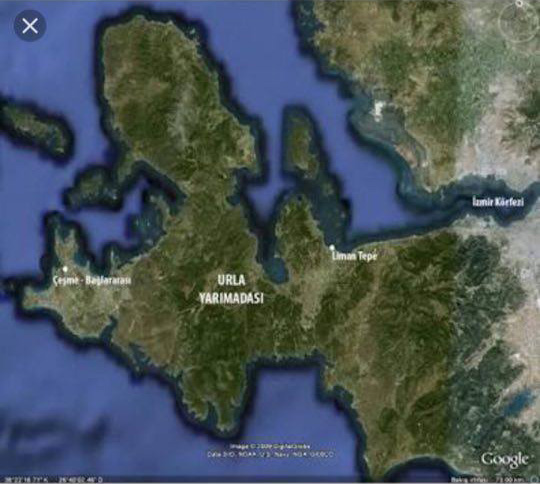
Location of Çeşme in the region
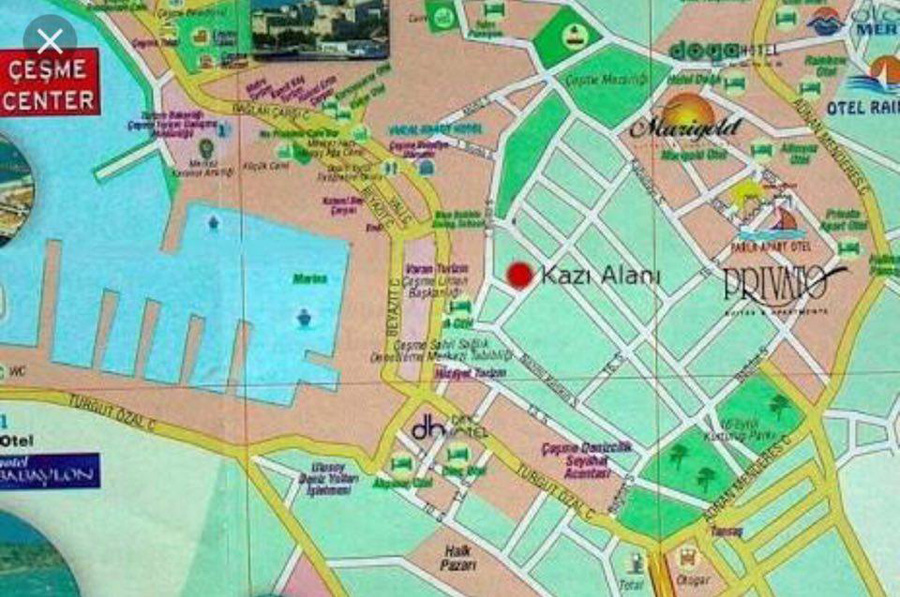
The location of the ancient Bağlararası archaeological site.
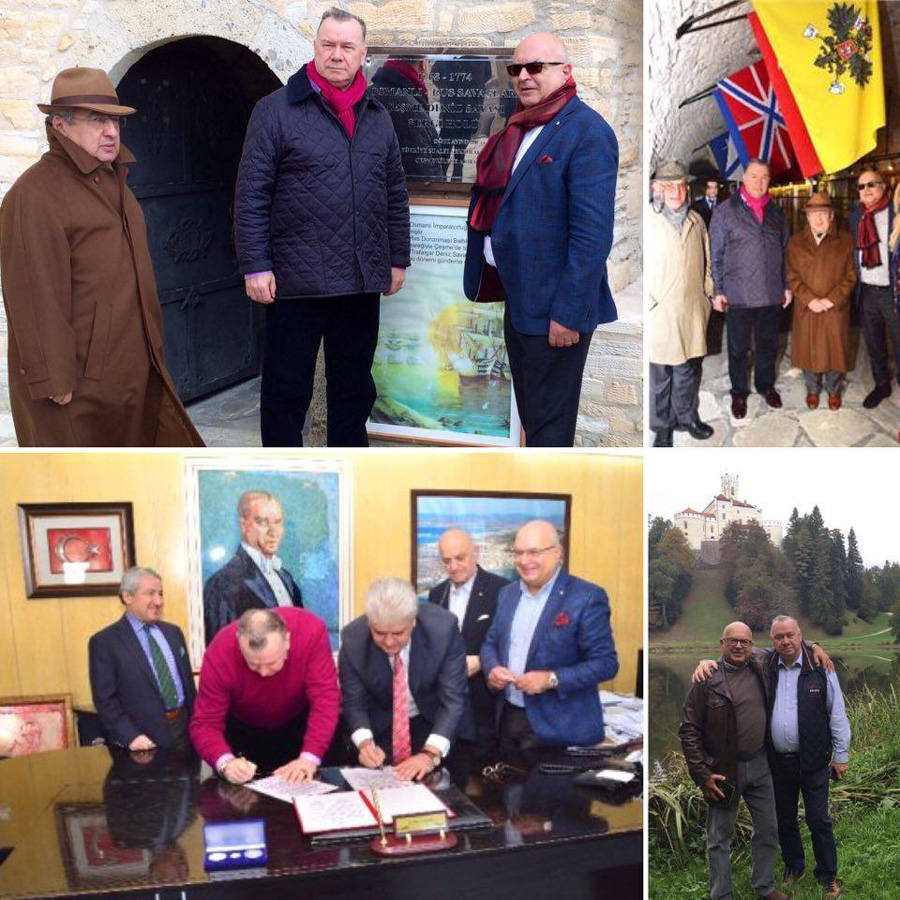
Count Alexy Orlov in Çeşme, the direct descendant of the commander of the Russian Naval Forces of the Russo-Turkish War.
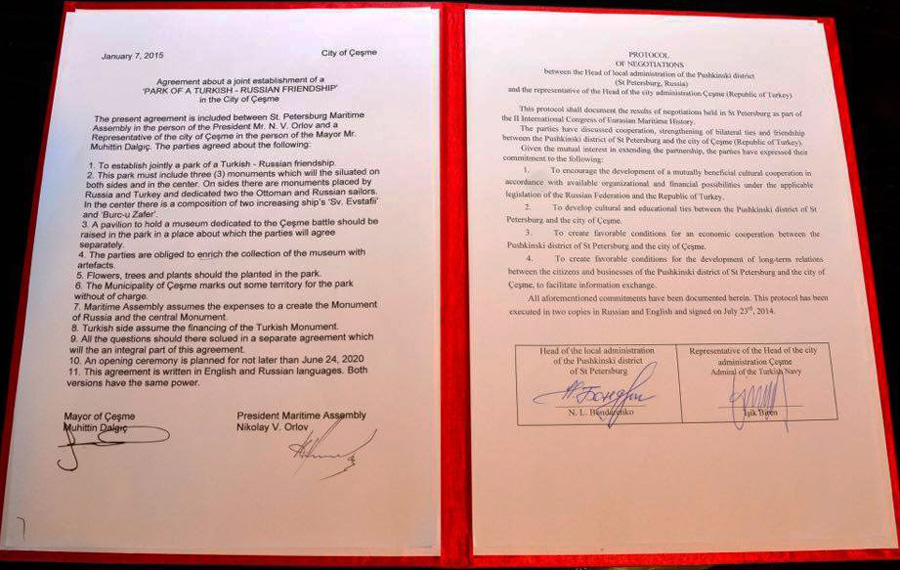
The protocol signed between Mayor of Çeşme & Nikolay Orlov.
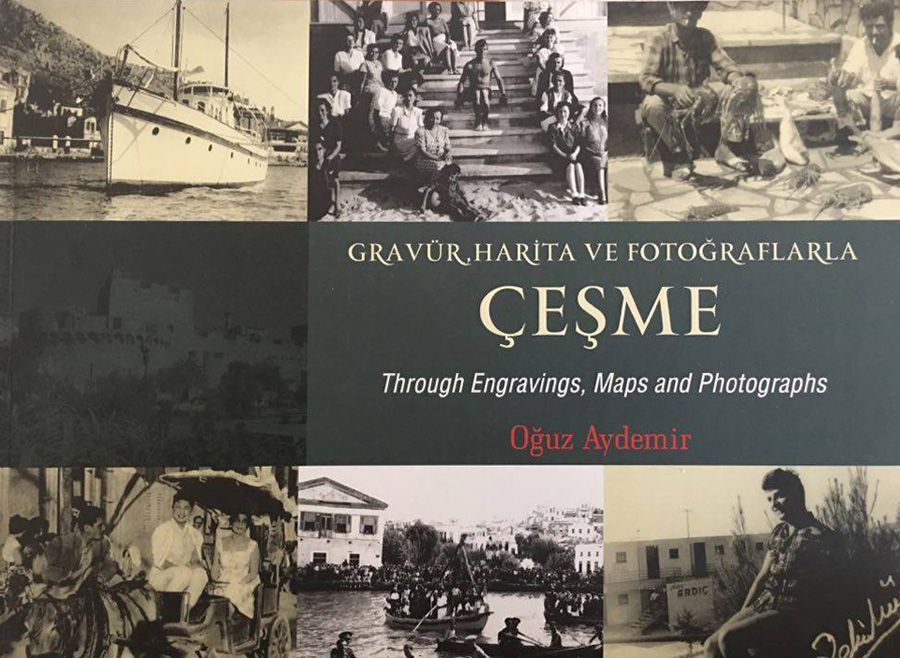
The cover of the book published by Mr Oğuz Aydemir for friends covering the engravings, maps and photos of old Çeşme in 2010.

Copper engraving from 1710 displaying the battle order between the Venetian and Ottoman naval forces during the twin battles of the Oinousses (9 and 19 February 1695) near Chios Island and Çeşme, after which Venetians lost this island.
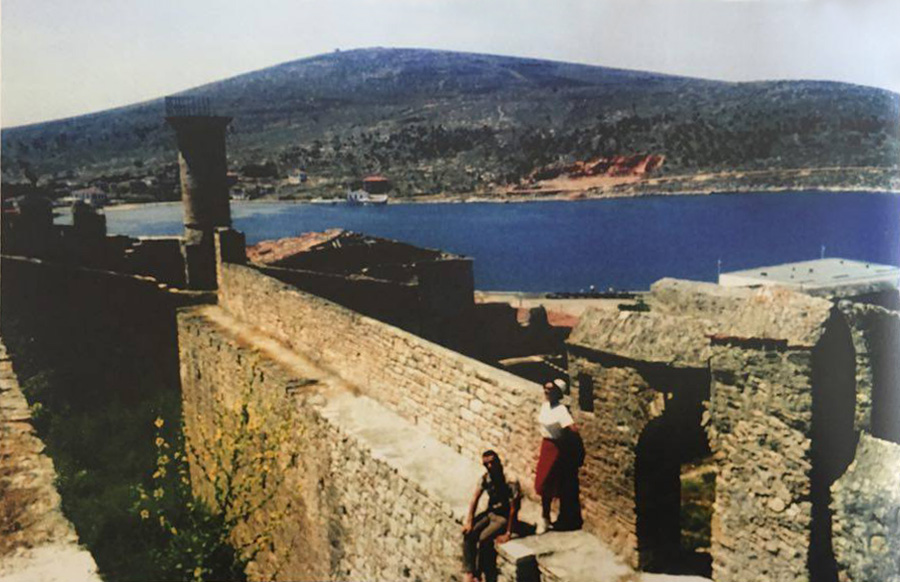
Çeşme castle.
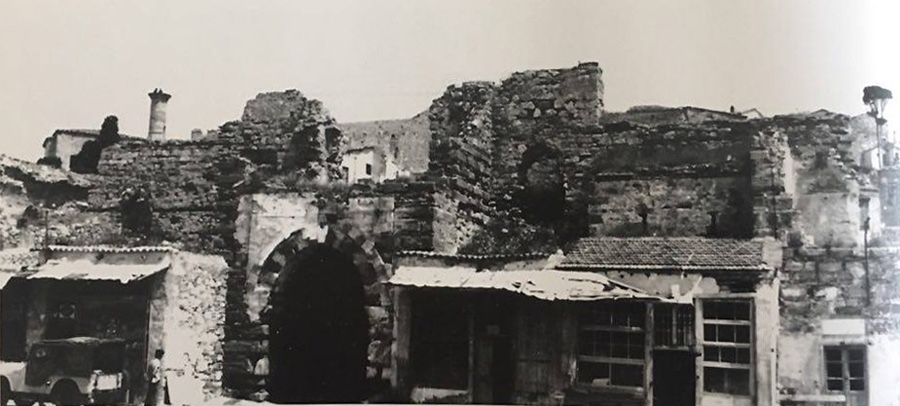
View of the Ottoman caravanserai in Çeşme built in 1508 by order of Sultan Bayezid II, before it was restored and transformed into a boutique hotel that it is today.
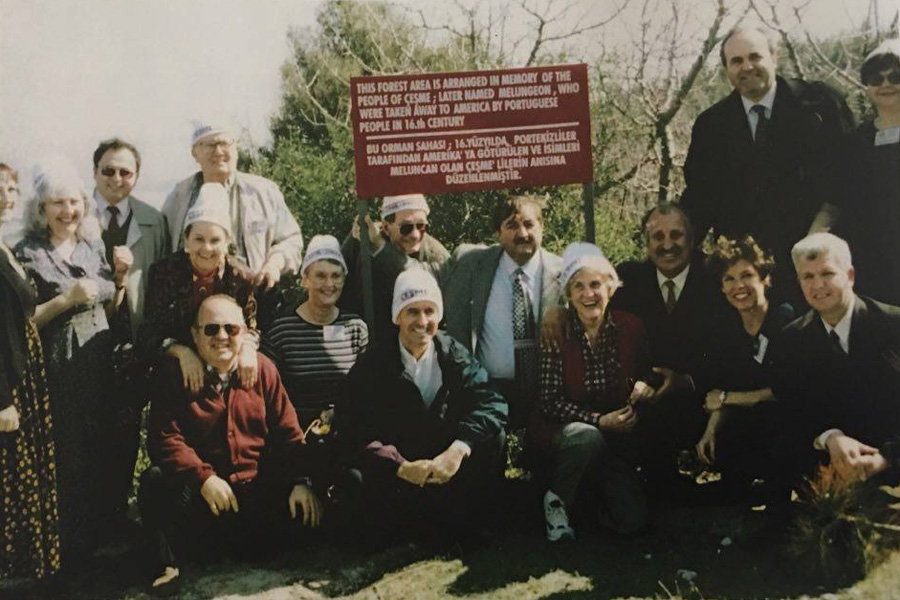
The 1997 dedication of a wood in memory of an American community named ‘Melungeons’ who assert they are the descendants of locals of Çeşme, transported to the new-world by Porteguese mariners just as it was being settled by Europeans in the 16th century.
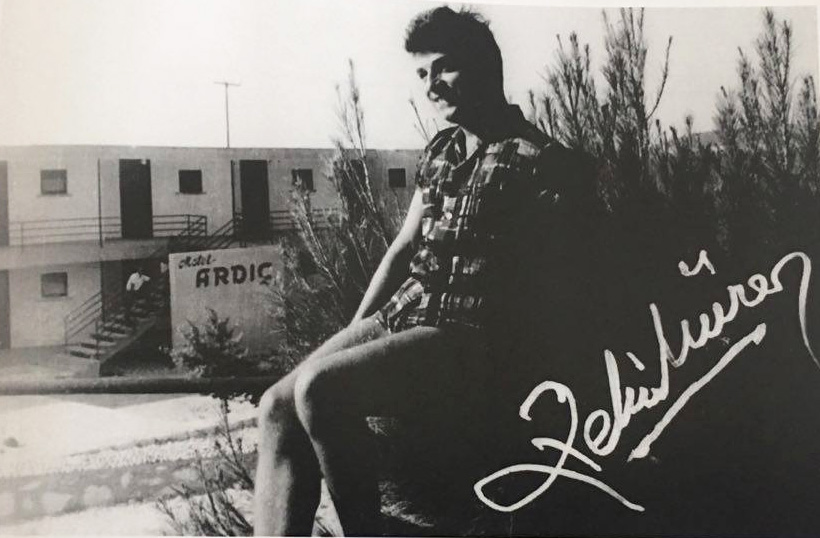
The famous Turkish singer Zeki Müren outside the former Ardıç Motel of Paşalimanı, Çeşme.
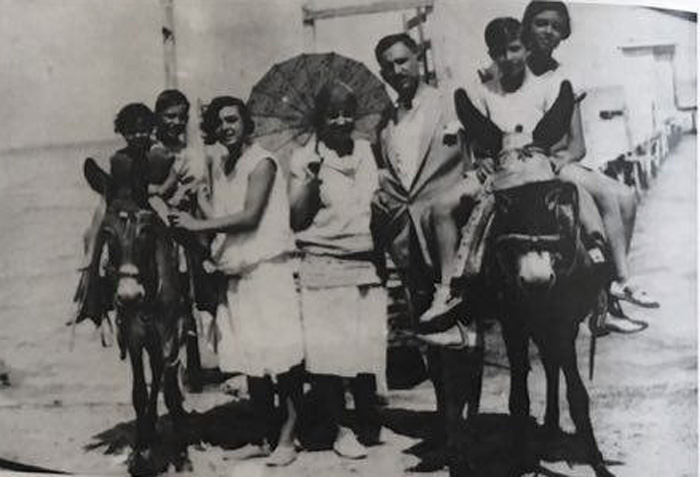
On Ilıca beach, 1927: left to right, Daisy Micaleff, Phillys Filipucci, Agnes Micaleff, Antoine Micaleff, Evelyn Micaleff, Nola Filipucci.

On Ilica beach, 1941: Daisy Clarke standing on the left, Sila on the extreme right.
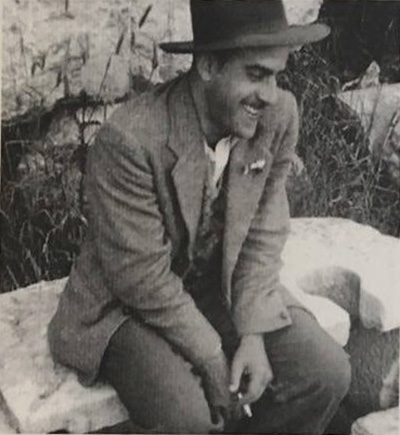
Edwin Clarke, 1943.
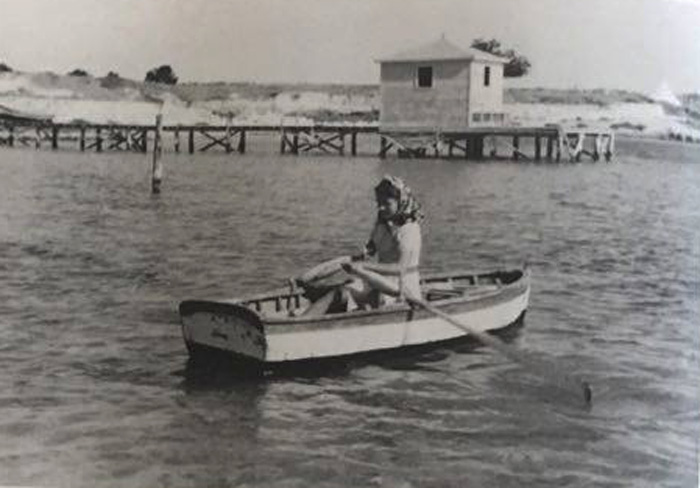
Daffy Ehtridge, 1940s.
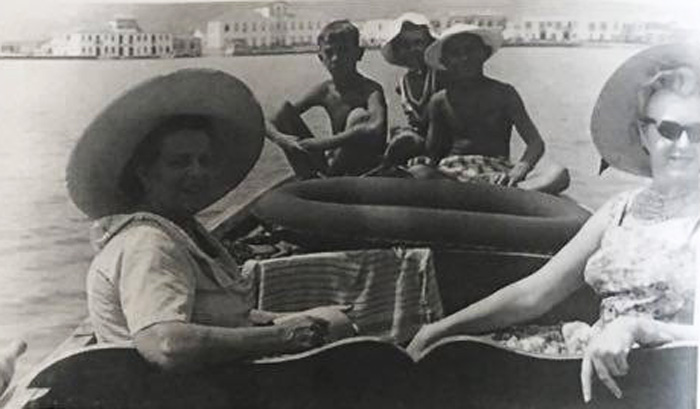
From left: Alma Mario Sponza, Mary-Ann Clarke - Patrick Clarke in the background (left), Ilıca 1955.
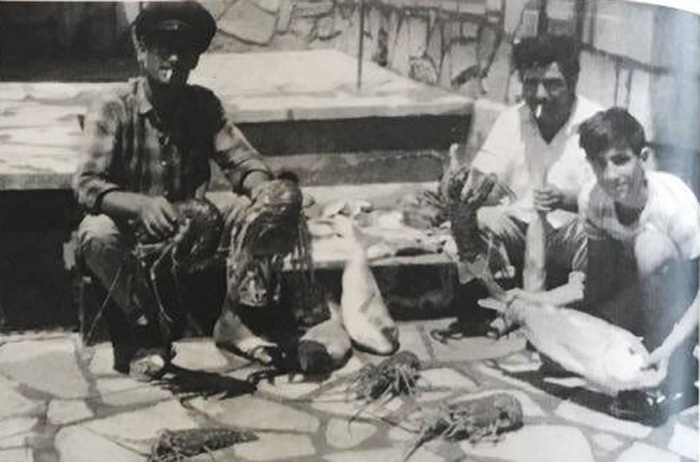
From left: Orhan Batan, Deli Emin and Patrick Clarke, July 1955.

